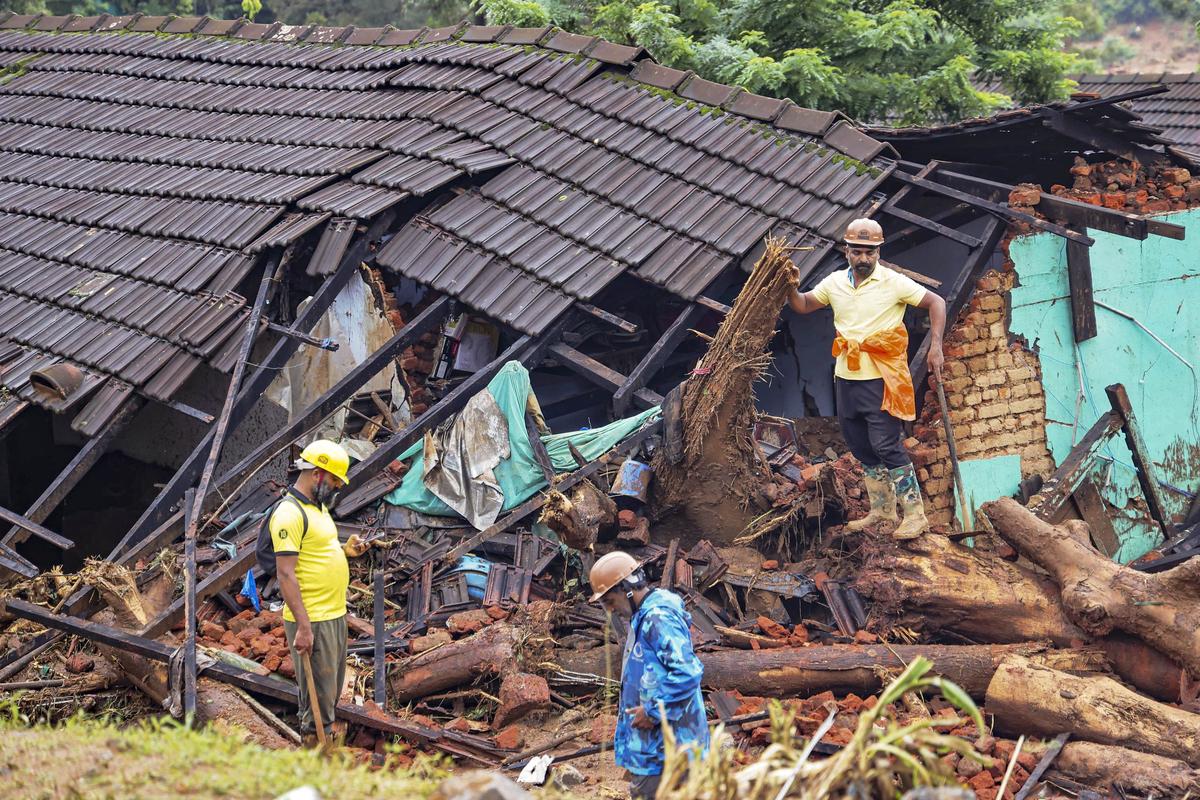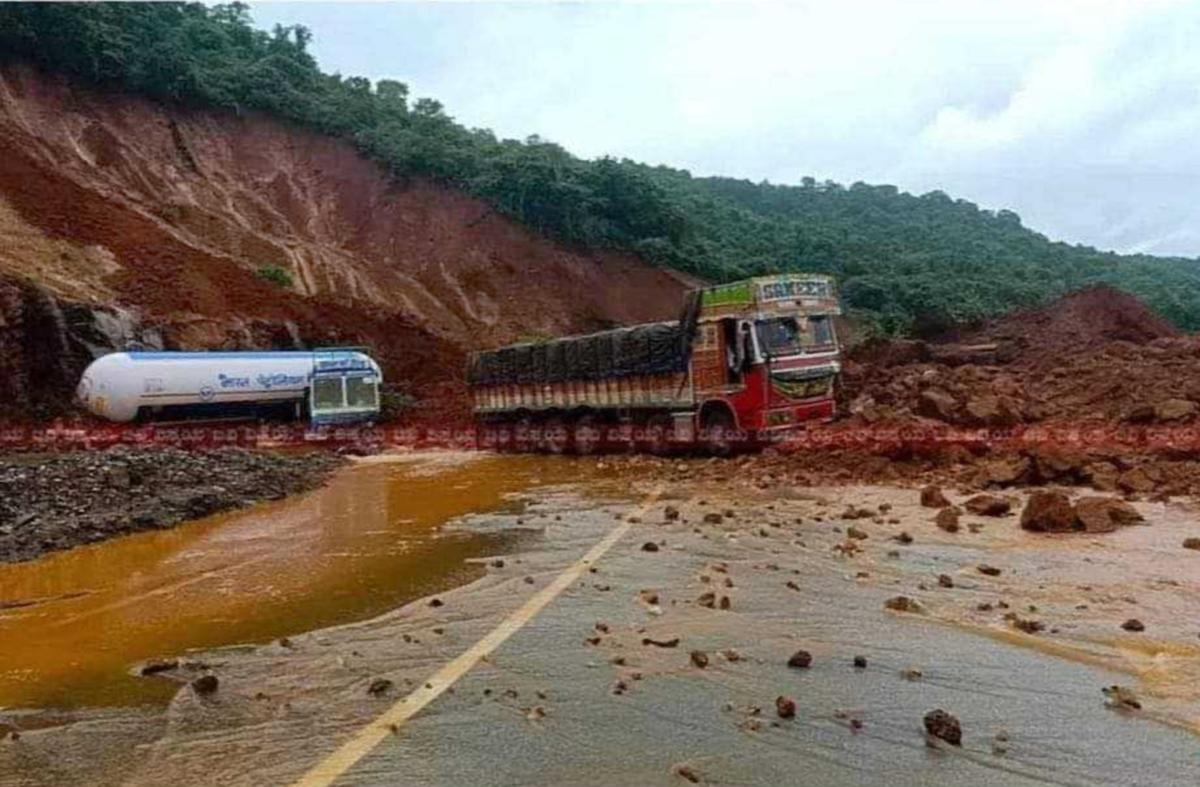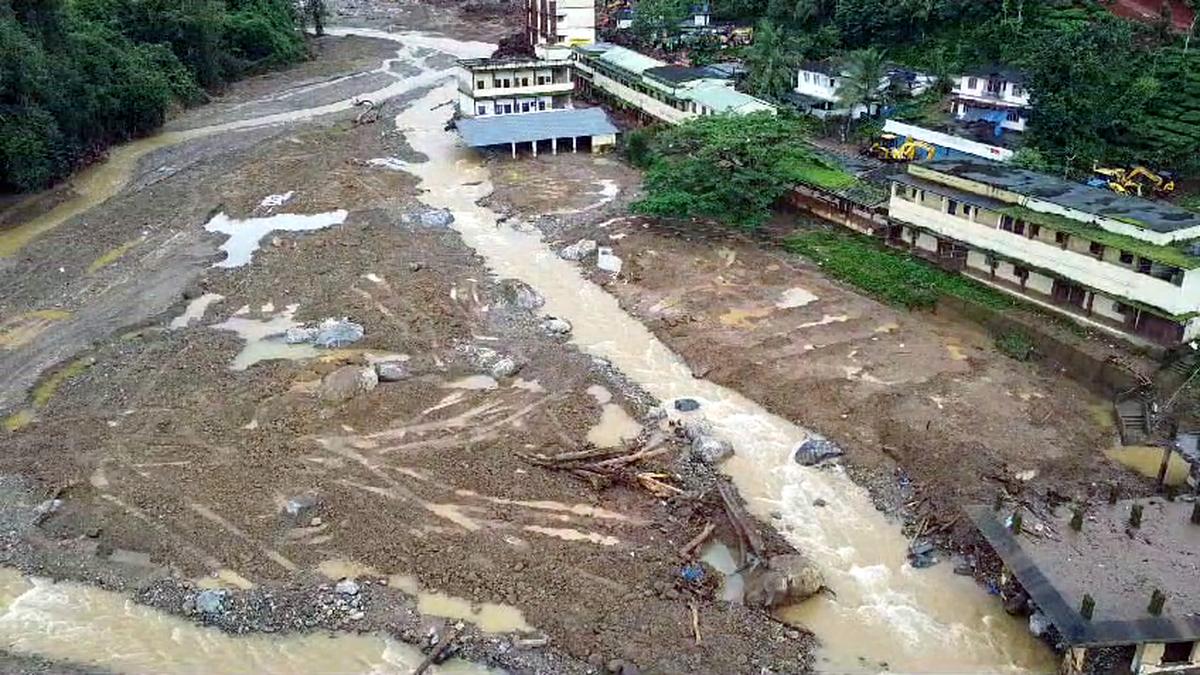The wounds of the tragic landslides that struck Kerala and Karnataka in July have not healed yet.
In Kerala disaster struck in the early morning of July 30 in the Mundakai-Chooralmala region near Meppadi in Wayanad, resulting in the death of more than 200 people as per government estimates. Exactly two weeks before the incident, on July 16, similar landslides struck Shirur Village in Uttara Kannada washing away 13 people. All the locations were situated along the Western Ghats.

Army and rescue personnel during a rescue operation at Chooralmala area after a landslide triggered by heavy rainfall in Wayanad district. | Photo Credit: –
India is among the top four countries with landslide risk according to the Landslide Atlas of India published by the Indian Space Research Organisation and National Remote Sensing Centre. Between 1998 and 2022 around 80,000 incidents occurred in the country causing severe casualties to lives and livelihoods.
This also underscores the importance of publicly available data on landslide risks and cumulative rainfall to form effective mitigation strategies.
Climate Software Lab (CSL), the climate technology arm of Bengaluru-based clean fuels company GPS Renewables, has come up with a Landslide Risk Assessment model that maps landslide risks in some of the most eco-sensitive and fragile regions of the Indian subcontinent.
A free open-source software available for the public and policymakers, the tool was developed by a team of AI experts and scientists.
Search operations after landslides hit Mundakkai village in Wayanad on August 1. | Photo Credit: THULASI KAKKAT
Granular estimates
The model can map landslide risks in regions including the Western Ghats, Himalayas, and Northeast India covering around 40 lakh people. It grades places from ‘low susceptibility’ to ‘very high susceptibility’ and has a web interface which helps to visualise the same.
It all started off as a hobby project, remembers Nipun O.S., Chief Sustainability Officer, Climate Software Lab.

Nipun O.S, Chief Sustainability Officer, Climate Software Lab | Photo Credit: Special arrangement
“Climate risks can affect our projects at GPS Renewables. While we set up biogas plants it is important for us to be able to locate the plants in places with less exposure to risks,” he says.
CSL, whose core philosophy has been to build systems on top of open-source software, started working on solving this problem and developed the landslide risk assessment model based on the global Landslide Hazard Assessment model for Situational Awareness (LHASA) model by NASA.
“In the NASA model, the issue was that it was very coarse in resolution. It will paint high risk for large areas. Therefore, it wasn’t very useful for us in any real context as landslides are a very local phenomenon in most cases.”
The team used parameters such as forest loss, distance from structural lineaments and road, slope of the terrain, tree canopy height, clay content and human modification of the region, all conditions pertinent to local areas. This helped to get a more granular estimate of landslide susceptibility of the regions it covered.

Landslide on National Highway 66 near Shirur of Ankola taluk in Uttar Kannada district on July 16. | Photo Credit: HANDOUT E MAIL
Importance of data
Most of the datasets that have been used in the making of the model are publicly available remote sensing data by agencies like NASA.
“One of the objectives behind the project was also to highlight the need for openly accessible datasets on climate and the potential uses of it,” says Arun Madhavan, Head, Technology, Climate Software Lab.

Arun Madhavan, Head, Technology, Climate Software Lab | Photo Credit: Special arrangement
Pointing to the absence of timely and accessible data on climate events in India, he takes the example of the Landslide Atlas of India. The Atlas which was last published in 2023 comes as a PDF document and does not divulge actual data or details of how the data was computed, he notes.
“To effectively tackle climate-related risks, we need to continuously improve models based on experiences and new data sets available. In this regard it is quite important that these datasets are publicly accessible.”
“GSI data is absolutely crucial in this. Unfortunately, it is not made available to the public at regular intervals. People can come up with innovative solutions only if data is available. Generating this kind of data is impossible for private industry. Only governments can do that. Once the data is generated and made available, even an individual can analyse it given the computing powers today,” he notes.
Interestingly India is a signatory to the Rio Declaration on Environment and Development which urges States to ‘facilitate and encourage public awareness and participation by making information widely available.’
Not a predictive tool
While CSL’s model provides an effective tool to estimate the landslide susceptibility of a region, the developers stress that it is not a prediction tool, not at least for now.
“It will help understand the general susceptibility of a region. But it will not tell you that a landslide is going to happen tomorrow,” says Nipun.
However, the team believes that the current model, which is static in nature, could serve as a foundation to build a more dynamic model in the coming days.
“The event of a landslide is typically triggered by rain. So, we are also considering integrating rainfall information into the model to get some sense of the cumulative rainfall over a particular area in the last few days. If it is substantially different from the historical data, then that area has a higher possibility of landslide.”
Madhavan adds to this. “If you look at landslides and related damages, there are instances where impact of human modifications of a region triggered incidents. However, in the last two major landslides in Kerala, you cannot say human intervention was the key directing force. In both cases landslides started in forest or near-forest kind of condition. The locations were considered relatively stable and not modified for the last 100 years. Whereas if you look at the landslides in the Himalayan region human intervention has become a big factor,”
“This points to the importance of monitoring the rainfall and data on rainfall would help with the prediction part. As the cumulative rainfall crosses a certain threshold the existing landslide risk in a certain area will go up. That is the second part which we want to develop. With that, we can have a predictive model.”
The Landslide Risk Assessment model can be accessed at https://terraininsight.gpsrenewables.com/



